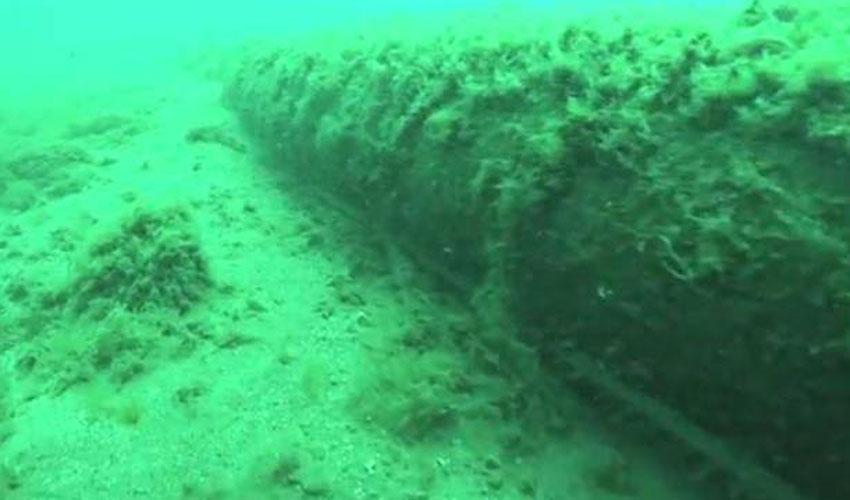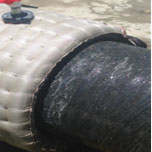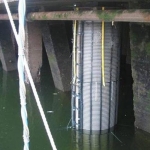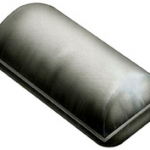Subsea Formworks – Mattresses, Supports, Covers, Sleeves, and Shells
Synthetex installs fabric formed concrete supports, mattresses, covers, sleeves and shells to prevent pipeline damage and scour, and support pipeline freespans. Jack-up supports can be used to raise a pipeline or structure. The flexible, high-strength synthetic woven fabric bags are cost effective to make and are easy to deploy by an ROV or diver.
Portland cement fine aggregate grout is mixed on deck, then pumped through a deepwater grout pipe that has been pre-connected to the formwork and lowered to the seabed on a sled. The formwork is positioned by an ROV or diver and checked for orientation and position and monitored to assure even filling. Many formworks can be filled in one stage. Due to their size and volume others may require multiple compartments and filling stages.
Freespan Rectification
In order to determine the design and path of underwater pipelines and cables, surveys of seabed topography and investigations of local currents enable engineers to evaluate the potential occurrence of scour and the need for freespan measures.
Eliminating unacceptable freespans, resulting from undulating sea floors, will require pipeline supports that meet the regulatory requirements, following design codes such as DNV-RP-F105 for freespans. Seabed scour around pipelines and structures will occur as a result of increased velocities caused by localized currents. Fabric formed concrete mattresses can be designed and installed to protect both new and existing pipelines from the loss of supportive sediment.
Engineers used computer modeling software to identify tens of potential freespans that would need addressing along a recently completed project, in the Bay of Bengal, that required formwork supports for a new 32 in export pipeline and a 14 in intra-field pipeline.
Custom subsea grout bags were designed and manufactured to suit the terrain and height of the freespans. The large-base grout bags had anti-scour protection skirt sleeves built into them, which slows down the local current and causes suspended particulate matter to settle. Over time, the skirts become engorged with sediment, reinstating the seabed.
The grout bags required filling in two or more stages due to their volume. This was achieved by injecting grout into the lower section of the bag and allowing it to cure to provide a stable support for the grout injected in the upper sections. The formworks were installed in water depths up to 186 m across a 90-day campaign.
Deepwater Pipeline Separation
There are other subsea applications for fabric formworks, such as jacking or separating crossing pipelines. Jack-up supports protect the lower pipeline. An ROV will remove the formwork from the deployment sled and maneuver it into position. With the pre-connected grout pump already attached, fine aggregate supports are filled with fine aggregate concrete.
Ordinary Portland cement (OPC) grout is mixed on deck, then pumped to the grout bag via a deepwater grout umbilical, connected to the formwork deployment sled. After sufficient grout has entered the formwork to stabilize the bag, checks are made to ensure that the bag orientation and position is still correct and that it is filling evenly.
The crossover grout bag is designed to be filled in three stages due to its size and volume. The lower compartment is filled and allowed to cure sufficiently to support additional grout in the upper compartments.




